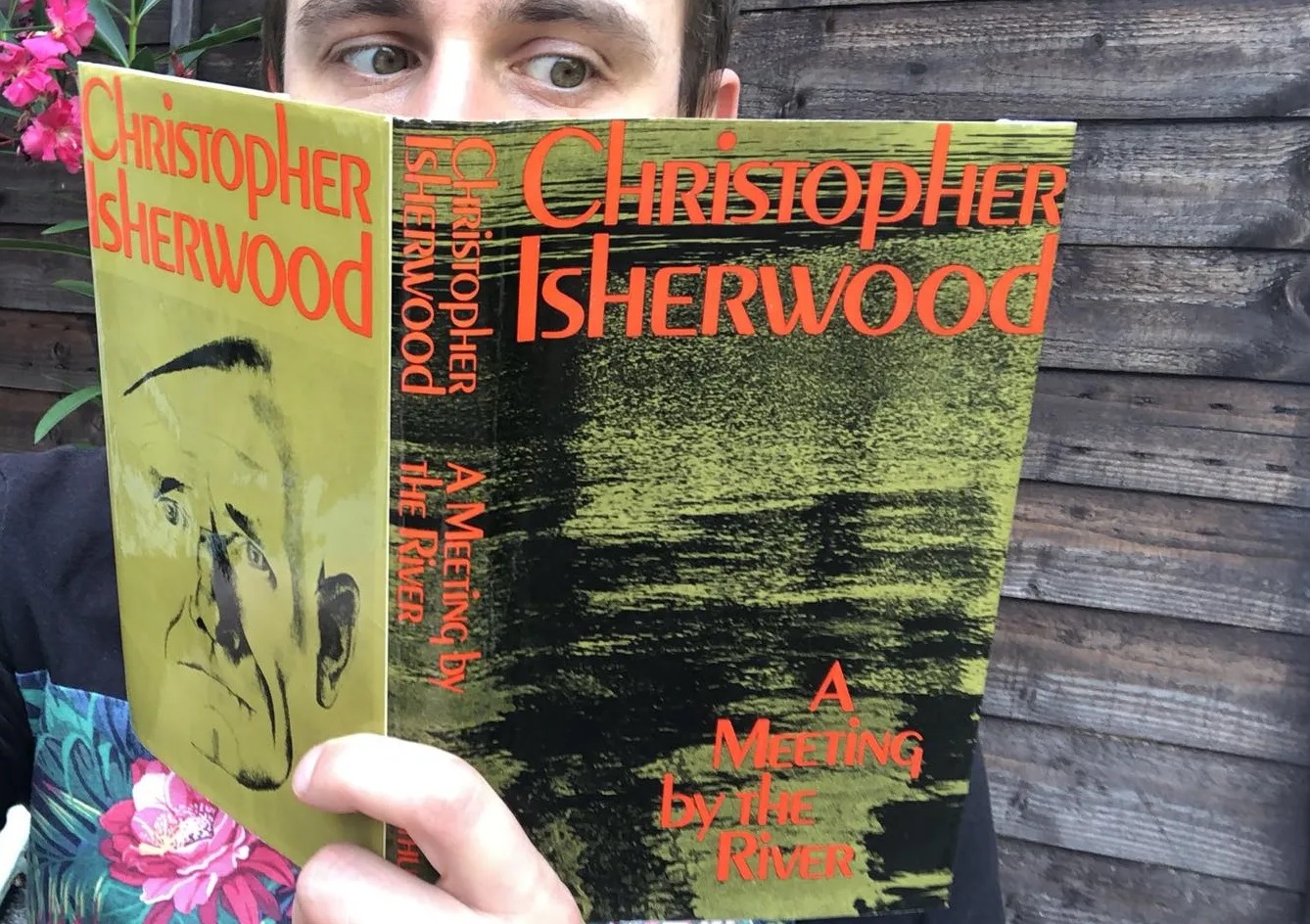Christopher Isherwood – A Meeting by the River
Isherwood’s final novel may not be his most popular, but is well in line with his other works. Part epistolary, part diary fiction centred around sexuality, but this time with religion also thrown in the mix.
The titular meeting is between two British brothers in a monastery somewhere between Calcutta and the banks of the Ganges. 34-year old Oliver has distanced himself from his family, and now is about to take final vows as a Hindu monk. His elder sibling Patrick lives with a wife and children in London, and has an affair with a young man in Los Angeles where he works on a movie script.
We follow the story as related in letters: first between the brothers, then Patrick’s correspondence to their mother, his wife Penelope, and his lover Tom. He’s putting on façades depending on who he’s talking to. While he seems contrived when writing to his mother, sugarcoating and withholding facts to reassure her about Oliver, his letters to Penelope are much more genuine. We find out that he doesn’t regard his brother’s spiritual life that highly. He’s also deprecating of Indian culture, by chance giving away his ignorance, or even prejudice. It’s in his letters to Tom that he reveals his true self. They’re full of passion and charged with eroticism (“I have never in my life met anyone like you”, “It built up inside me until I could hardly bear it, and then came a terrific release”).
About half of the book consists of entries from Oliver’s journal. As honest as they are, they reveal insecurities and conflicted nature (“His power over me is nothing but my own doubt and weakness”, “I’m wildly happy, and then afraid again”). Oliver records his thoughts with anxiety. There’s also much anger directed at Patrick, whom he blames for his owns hesitance as to whether or not to take the vows. Only several paragraphs later, he admits that he actually needs Patrick to validate his decision.
There is resentment and rivalry between the brothers. The fact that Penelope used to be Oliver’s girlfriend must have something to do with it. But there’s also genuine love and care in this convoluted relationship. When Patrick’s big secret is out by accident, they open up and give each other a bitter pill of an advice. Oliver is accepting of his brother’s bisexuality and urges him to leave Penny. Patrick insinuates that Oliver’s religious path is nothing more than running away from himself. The characters want to run from convention and stay true to themselves, but are faced with difficult decisions.
A Meeting by the River takes on such motifs as secrets, lies, internal conflict, image, manipulation. It is also one of only two Isherwood novels with religion and spirituality as central themes. No doubt was it influenced by his own relationship with Vedanta, a branch of Hindu philosophy, which he would have been decades into studying at that point. In turn, Patrick and Tom may have been modelled on Christopher’s real-life relationship with younger artist Don Bachardy (who created the author’s portrait on the back of the first UK edition).
This was Isherwood’s final novel, originally released in 1967. After that, he only published a few biographical and religious books, and collaborations with his partner. Although not one of his most popular, it is well worth reading, especially if you’re interested in Eastern spirtuality.
